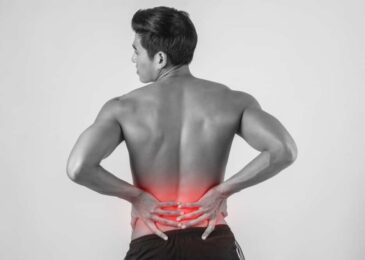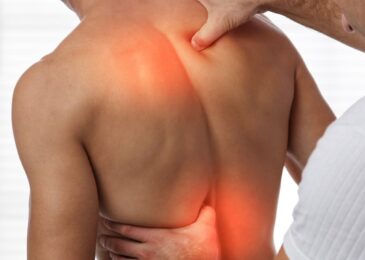
At some point in your life, you will, or have experienced inflammatory back pain. Inflammatory back pain affects 3% of adults. In addition, according to the Chiropractic Association, about 80% of U.S. would have a back spasm treatment through their life journey.
Inflammatory Back Pain:
Inflammatory back pain is the pain you feel when the joints of your spine are affected by inflammation. It’s usually due to mechanical back pain; sometimes the cause was just a spasm in the lower back.
A back spasm is one of the leading causes of severe back inflammation but not the primary reason. Back spasm pain is actually an involuntary contraction of the lower back muscles. Though the conditions vary from mild to severe pain, back spasm treatment can be easy without having a surgery. In some cases though, if your pain is caused by nerve issues in your spine, there will be intervention.
The severe conditions of mechanical back pain can develop into inflammatory back pain if ignored. It might be difficult to diagnose the condition by yourself, but a doctor can help you identify and manage your pain.
We’ll cover the causes, treatments and stretches to relieve both cases: inflammatory and spasm pain.
There are certain notices you have to take into consideration if you have back pain:
- Early diagnosis is important, so make sure to contact your doctor when you feel increasing pain in your back muscles or in the neck.
- Inflammatory back pain will affect your life; your doctor should inform you if the pain is inflammatory in order to figure how you should manage the pain in the future.
- Though painkillers and exercises could be done to ease the pain away, an early check on can save a lot.
- When you start home treating your condition, it’s better to do the treatment therapies as a pack. It’s more effective done together. For example, doing flexibility exercises (walking, stretching), applying heat compressors (Hot & cold), using pillows and belt to support your back, and taking medications all together until fully recovered.
Answer these five questions to figure if you need to see your doctor:
- Have you tried to rest but noticed your back pain doesn’t improve?
- Do your back pain recover after getting up from sleep?
- Does your back pain improve with exercise?
- Did your back pain develop gradually?
- Did your pain start before 40?
If your answer was YES to FOUR of the five questions, chances are you have back inflammation. We recommend you discuss these symptoms with your doctor.
Inflammatory back pain may relate to a chronic underlying cause. You need to start contacting your doctor once you feel any increasing and unstoppable pain.
Inflammatory back pain symptoms:
- It starts below the age of 40
- The pain increases gradually
- Exercises improve the pain
- Rest doesn’t ease the pain
- The pain may wake you up from sleep
- In the morning, you suffer stiffness up to 30 minutes
- Your back pain lasts for more than 3 months
- Accompanying buttock pain
Other Symptoms Include:
- Continuous ache in the low back
- The pain feels like stinging and burning in your lower back, continued to your thighs.
- Leads to back spasm and tight muscles in your pelvis and hips
- If you sit or stand for some time, the pain gets even worse.
- Pain prevents you from standing straight or easily go from standing to sitting.
Inflammatory Back Pain Causes
Why do you suffer inflammatory back pain at such young age? and what are the possible inflammatory back pain causes that might occur and develop into unstoppable pain? Read along.
Inflammatory back pain can be caused by:
- Muscle spasm
- muscle strain
- nerve injury
- degenerative changes
More Serious causes include:
- Osteoarthritis
- Compression fracture
- Spinal stenosis
- Disc herniation
- Infection
- Neurological disorders Diseases of the central nervous system: the brain, spinal cord, cranial nerves, and nerve roots and so Neurological disorders can include tumors, stroke, migraine and other disorders.
- Cancer: Cancer may be a cause of general body pain. Don’t over stress yourself before checking the symptoms and taking consultant from your doctor.
- Autoimmune diseases: non-radiographic axial spondyloarthritis, Ankylosing spondylitis, psoriatic arthritis, and reactive arthritis.
- An autoimmune condition: means the body is attacking its own healthy tissue. These several autoimmune conditions are closely related to inflammatory back pain and back spasm treatment
- Ankylosing spondylitis: It’s a type of arthritis inflammation in the joints of your spine. It causes lower back pain and stiffness. You can see the damage on your spine of this condition on x-ray.
- Non-radiographic axial spondyloarthritis: This is when the doctor cannot identify an inflammation on the x-ray but you still feel the pain. In these cases, you’d need a magnetic resonance imaging (MRI) to scan the damage on your joints.
- Psoriasis: A noncontagious disease, it leaves gray flaky patches on the skin from outside but remains red and inflamed underneath the skin especially if scratched.
Inflammation and Back Spasm Treatment (Home Remedies)
To diagnose and treat your back inflammation you should be patient through the whole process. It’s difficult to diagnose these type of diseases whose symptoms all refer to each other.
Early detection of back inflammation is the key to manage the pain and prevent future intervention or permanent damage to the spine. A back inflammation can begin as simple as poor posture habit that should’ve been fixed with exercises but ignorance made it worse.
Among the many back spasm treatment methods, the American Physical Therapy Association reports that conditions caused by acute muscle strain or chronic pains and back spasms can be home treated.
Rest
If you experience a muscle strain or chronic back pain, try to give your body some rest. Rest should be an instant pain relief. If the inflammation is just starting then rest should allow it to subside while your natural healing mechanism controls the recuperation.
Ice & Heat Compressors
I don’t know what you heard but applying a cold compressor over the inflamed area for twenty minutes can temper any sharp pain, as the American Pain Society recommended.
Support
This step isn’t an inflammation and back spasm treatment as much as it can ease the pressure on your spine and support you while sitting or walking. Tuck pillows on both sides of an armchair to help you sit straight. Use crutches or a cane to lessen the stress off your back muscles while walking. You can also wear an SI joint belt to support your lower back through the daily regular movements.
Exercise
Contrarily, exercises can break an improving cycle of painful inflammation. Stretches, swimming or walking are good therapies to consider while the body is recovering. Make sure any exercise or stretching is gentle on the muscles so it loosens the tensed joints, not the opposite. Then, you can gradually increase your activity without worrying about inflammation increase. Therefore, flexibility exercises would cause you no pain and will help in the process of your back spasm treatment. It will relieve tight muscles and strengthen them.
Certain sports to avoid until full recovery:
- Golf
- Tennis
- Softball or Baseball
- Weightlifting
- Martial Arts
- Basketball
- Cycling
- Hiking
Inflammatory Back Pain Treatment (Medications)
Analgesics
Analgesics are another inflammatory back treatment method. They are injected through the inflamed skin or applied directly to the skin though more affected when injected. No medical treatment methods are good to take on a long-term basis (because of side effects). The common application includes Lidoderm patch, which releases lidocaine into the skin to numb the pain.
Muscle Relaxants
Muscle relaxants like narcotics are another source of treatment to back inflammation. They are a great treatment for back spasm on the secondary pain level. They also minimize the stress and anxiety caused by continuous pain.
Antidepressants
Antidepressants increase the norepinephrine and serotonin in the nerves. These neurotransmitters help with the communication of the nerves in the brain. These medications are mostly used for leg pain more than back inflammation. Nevertheless, when the depression hit in, they are the best choice.
Antiseizure
It’s difficult to predict the effect of those medications. They’re mostly used for increased pain frequency to stabilize and make the nerve cells less excitable.
Acupuncture
This might be the best solution for lower back inflammation, back spasm, and body pain in general. Acupuncture works to increase the body’s natural healing ability.
Back Spasm Causes:
A back spasm is one of the leading causes of severe back inflammation. However not the primary reason. Muscle spasm can be as simple as lifting a heavy object or slipping over stairs and could be something serious just as inflammation causes. A quick back spasm treatment is the key to fast recovery.
It’s very common for a person to experience sudden onset in the back muscles.
Common Causes of Back Spasms:
- One of the most common back spasm causes is overusing the muscles and over pressing them.
- Muscle spasms are spontaneous contractions that occasionally happens because of small strains in the spine. These strains slowly develop; it waits for an injury or a wrong movement by your side so it jumps to an inflammation. Therefore, a quick back spasm treatment is required.
- Degenerative disc diseases or herniated disc can be other reasons for lower back pain. Disc diseases will compress the nearby spinal nerve, which in turn will cause inflammation. While your body is trying to fix the affected area, it’ll tighten the muscles, which results in increased muscle spasm pain.
- Sudden muscle pressure like suddenly deciding to do squats many times quickly so you work out the muscles. Exercises are always recommended to increase gradually.
- Muscle Dehydration, which is caused by lack of fluids and electrolytes. Dehydration alters the balance of fluids in the body, which increases the excitability of the nerves- causing back spasm.
- Electrolyte abnormalities
Back Spasm Treatment Include:
- Applying ice for twenty minutes and repeating every two hours
- If the pain develops after two to three days, apply heat whether by a heating pad or soaking in a hot tub. (Ice reduces inflammation while heat increases the blood flow, which will relax and distress the tightened muscles)
- Elevate your legs to decrease pressure on your spinal muscles and lower back
- Take medications such as aspirin or ibuprofen to alleviate pain
What to do to prevent back spasms?
Make a routine of stretch exercises to strengthen your muscles.
Engaging in a regular physical activity will get you in shape, keep your muscles relaxed, active, and reduce pressure on your spine caused by wrong postures or unusual movements.
A fact is, if you’ve experienced muscle spasm once or twice, there is big chance it’ll happen again.
Back spasm symptoms:
Muscle spasm symptoms depend on the affected muscle area and the reason for the spasm
- A tight muscle can be felt underneath the skin where the contraction is located, whether in the lower back or upper back or in the neck. It usually resolves after a few minutes, if it lasts longer, perhaps massaging the muscle will help to resolve it faster. If not, try heat compressors.
- Other symptoms include numbness, loss of power or capability to lift regular objects.
If back spasm wasn’t treated right, and the pain didn’t stop, this means the case has developed into inflammation. You should seek medical treatment to control and stabilize your back muscles.
Certain cases you should immediately see your doctor:
- If your back pain started after a trauma, car accident or a sudden fall from a ladder
- Constant pain that is getting worse
- Severe pain that doesn’t improve after 7 days of home treatment
- Pain increases at night and wakes you up
- Abdominal pain accompanies back pain
- Numbness in the upper inner thighs and buttock area
- Neurological issues like weakness, tingling and increasing numbness in other parts of the body.
In summary, understanding the nuances of inflammatory back pain is crucial for those seeking relief from its often debilitating symptoms. From recognizing the telltale signs to exploring effective management strategies, this article has aimed to provide comprehensive insights into the world of inflammatory back pain.
Whether you’re navigating potential causes, considering treatment options, or simply aiming to enhance your overall well-being, staying informed is the first step.
Remember, a proactive approach to inflammatory back pain involves collaboration with healthcare professionals, adherence to prescribed treatments, and the incorporation of healthy lifestyle choices. By combining knowledge and action,
individuals can empower themselves to navigate the challenges of inflammatory back pain, taking significant strides toward improved comfort and a higher quality of life.
After covering inflammatory back pain and its relation to back spasm treatment. What symptoms do you have? Do you suspect a certain condition causing your back pain?
Help us improve by sharing your back pain experience with us.





